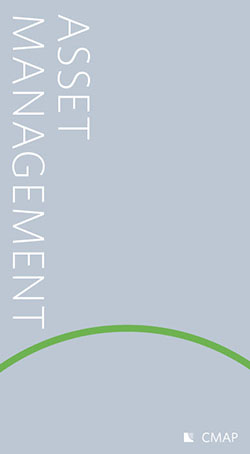Asset Management Strategy Paper intro
Asset Management
Asset management helps communities make better decisions.
While it may not grab headlines the way a highway expansion or new transit service would, maintenance and modernization of the system is the most critical transportation need for the region. Repaving streets, replacing track, and rebuilding buses are the bread and butter of transportation agencies.
Reinvesting to keep these assets in optimal condition will be a major consideration for ON TO 2050. While the Chicago region has a large transportation system in need of maintenance and modernization, it also has shrinking revenues to undertake that work. Given those facts, local communities should consider a stronger commitment to asset management, which is a systematic way of maintaining, upgrading, and operating physical assets cost-effectively.
ON TO 2050 will build on recent progress in asset management.
The new plan is expected to emphasize the state of good repair needs on the highway and transit systems. Partner organizations have made some strides toward building effective asset management systems. For example, the Regional Transportation Authority and the service boards have been active in this area, building an inventory of transit assets and assessing their condition over time.
Likewise, some communities have invested in pavement management systems to help them decide the type and timing of pavement maintenance. In the past few years, new asset management requirements have emerged at the federal level that apply to states.
CMAP is developing strategies to get the region's transportation system closer to where it needs to be.
ON TO 2050 will explore data needs and potential policy directions for asset management in metropolitan Chicago. Some early issues to address include how to consider the appropriate level of maintenance. Helping to define the appropriate role of the regional planning agency in asset management is also key. There may also be connections between asset management and other strategies being considered for ON TO 2050, such as climate resilience. Given climate trends, current infrastructure could be challenged by more frequent and severe flooding and hotter temperatures.
This is your plan.
Continual input by stakeholder organizations and individuals was vital to the development and implementation of GO TO 2040. From now through the next plan's adoption in October 2018 and beyond, CMAP will be engaging a broad cross-section of partners from across the region.
Take a moment to fill out the questions below, and for more information on CMAP's public engagement efforts, please visit www.cmap.illinois.gov/get-involved.
